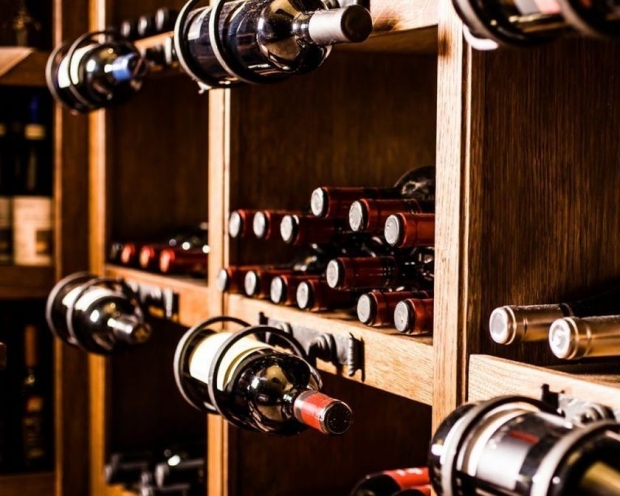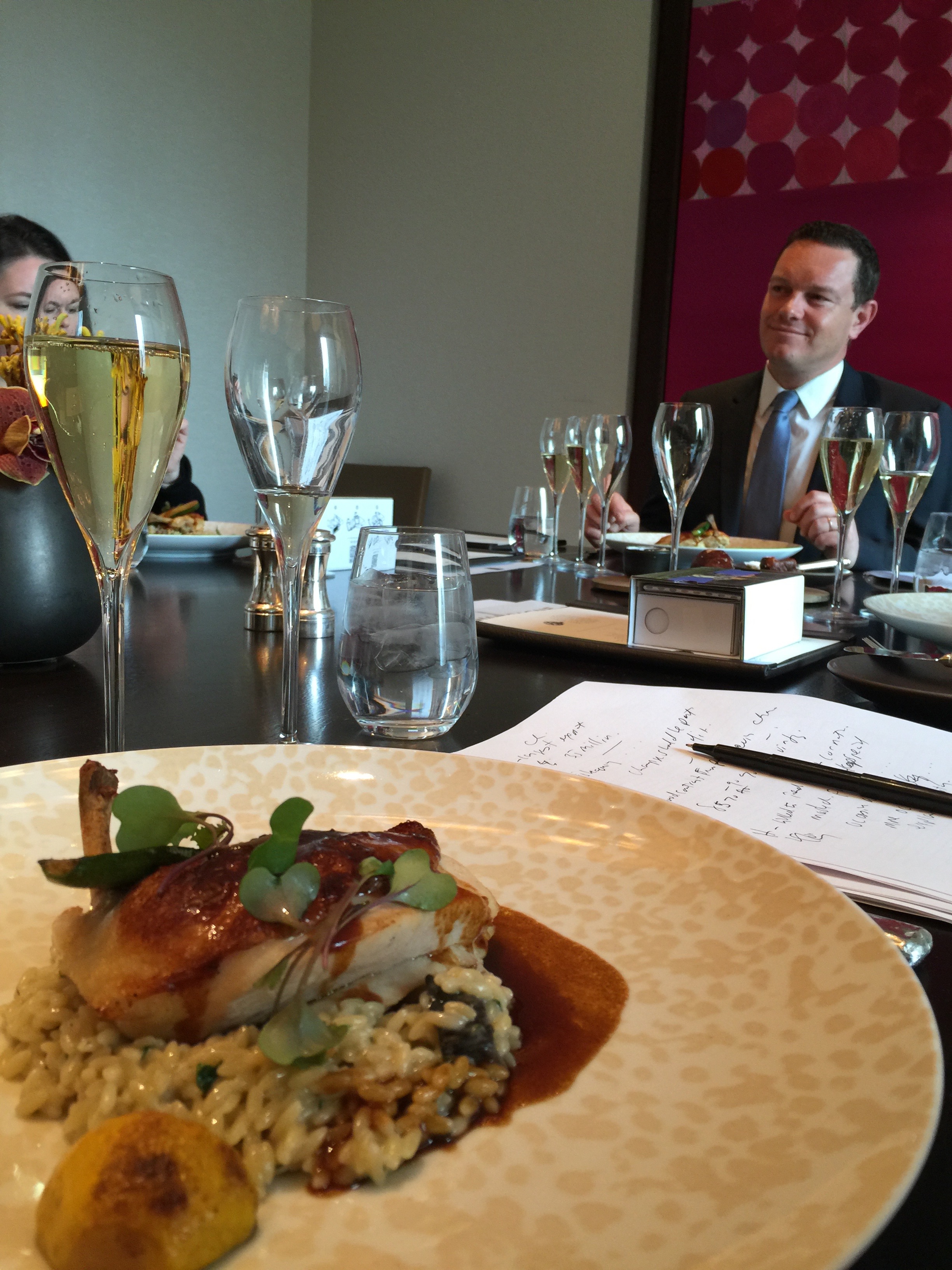 As I mentioned in Part l, I attended one of those lunches that rarely come around — not only was the food and Champagne selection extraordinary, in attendance was Thibaut Le Mailloux, Communications Director for Comité Champagne (the trade association that represents all the grape growers and houses of Champagne, France) and Sam Heitner, the Director of the Champagne Bureau, USA (which is the U.S. representative for the Comité Champagne). At this lunch Thibaut Le Mailloux and Sam Heitner provided US media and myself Champagne Region Updates – see Part 1 [The Update].
As I mentioned in Part l, I attended one of those lunches that rarely come around — not only was the food and Champagne selection extraordinary, in attendance was Thibaut Le Mailloux, Communications Director for Comité Champagne (the trade association that represents all the grape growers and houses of Champagne, France) and Sam Heitner, the Director of the Champagne Bureau, USA (which is the U.S. representative for the Comité Champagne). At this lunch Thibaut Le Mailloux and Sam Heitner provided US media and myself Champagne Region Updates – see Part 1 [The Update].
The media lunch was held at NoMI Kitchen, Chicago – Monday, February 29,2016
Why It’s A Hot Spot: Chic ambiance, relaxed open kitchen and stunning views of Michigan Avenue
Must-Order: Sushi
Insider Tip: Try and get a window table especially one that overlooks the Water Tower, and NoMI partnered with Green City Market and other local purveyors to source it’s menu’s ingredients
Executive Chef : Satoru Takeuchi
Here is an outline of the lunch menu, pairing specific champagnes to each course.
Through my travels and experiences, I found Champagne to be one of the most versatile wines for food, period. Here is a champagne and food pairing at it’s best!
FIRST
TUNA NICOISE
Seared tuna, quail egg, piquillo pepper
blood orange & lemon dressing
*Pierre Peters, Cuvee de Reserve Brut
SECOND
CHICKEN SUPREME
Pan-seared, buttermilk, tarragon, portobello risettis
natural chicken jus
*Perrier-Jouet, Grand Brut
THIRD
MEYER LEMON POSSET
Rosemary smoked candied pecans, braised huckleberries
vanilla sponge cake, champagne foam
*BILLECART-Salmon, Brut Rose
*Tasting Notes
Pierre Peters, Cuvee de Reserve Brut
This is beautifully balanced that’s crisp and laced with taut apple and citrus flavors; It has a rich texture, intense fruit with tight minerality.
91 points
Perrier-Jouet, Grand Brut
It shows lovely aromas of tropical fruit, citrus, spice and yeast; shows some complexity, is crisp and balanced with fine, persistent mouthfeel and lingering flavors of fresh apples and lemons.
90 Points
BILLECART-Salmon, Brut Rose
Fresh, elegant and focused with a fine bead, light salmon color, creamy texture, and lingering finish.
91 Points

![Champagne Bureau USA Lunch and Update – NoMI Kitchen, Chicago [Part 2 Media Lunch]](https://www.liz-palmer.com/wp-content/uploads/2016/03/IMG_7483-1200x1600.jpg)
![Champagne Bureau USA Lunch and Update – NoMI Kitchen, Chicago Part 1 [The Update]](https://www.liz-palmer.com/wp-content/uploads/2016/03/IMG_7469-1200x900.jpg)
 On February 29th, 2016 I attended one of those lunches that rarely come around — not only was the food and Champagne selection extraordinary, in attendance was Thibaut Le Mailloux, Communications Director for Comité Champagne (the trade association that represents all the grape growers and houses of Champagne, France) and Sam Heitner, the Director of the Champagne Bureau, USA (which is the U.S. representative for the Comité Champagne).
On February 29th, 2016 I attended one of those lunches that rarely come around — not only was the food and Champagne selection extraordinary, in attendance was Thibaut Le Mailloux, Communications Director for Comité Champagne (the trade association that represents all the grape growers and houses of Champagne, France) and Sam Heitner, the Director of the Champagne Bureau, USA (which is the U.S. representative for the Comité Champagne).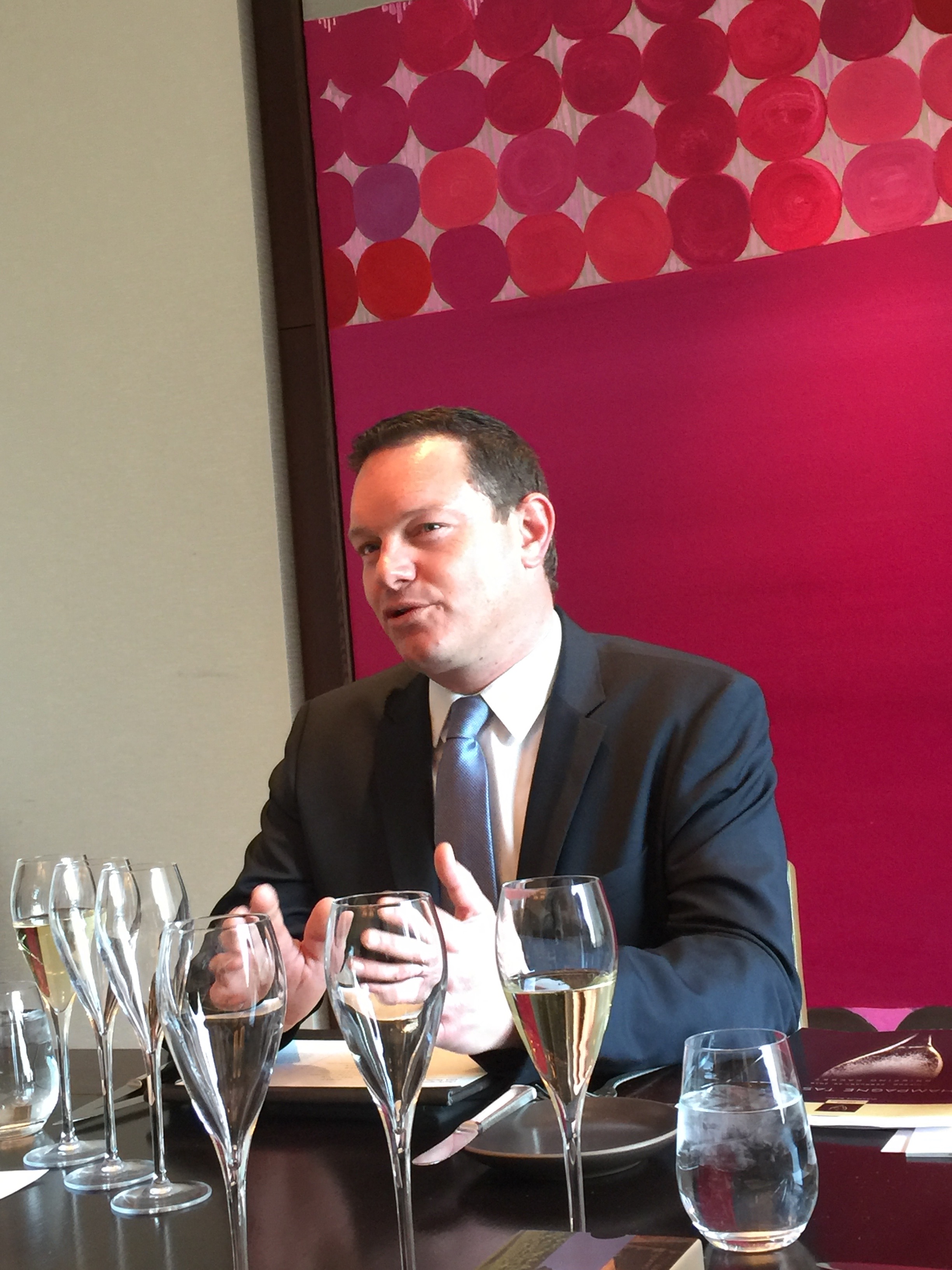

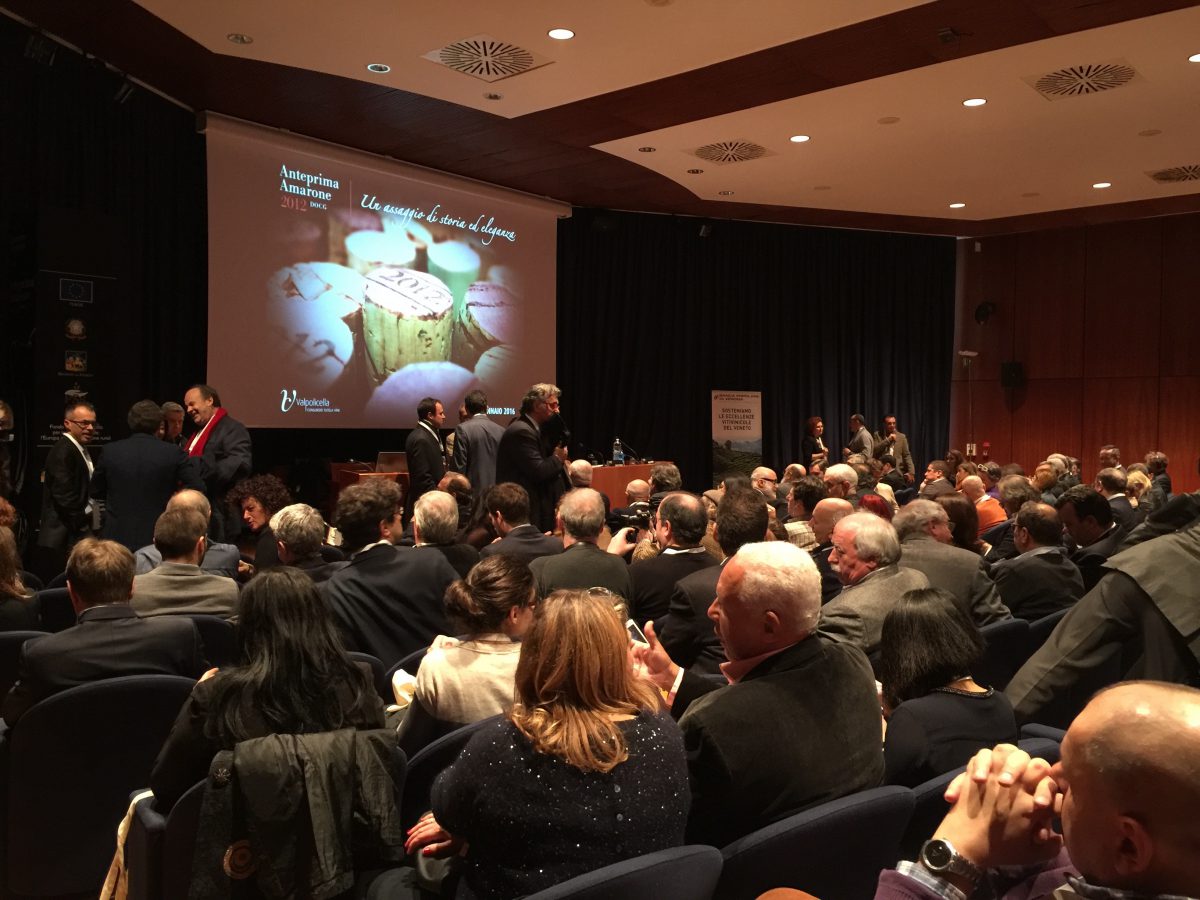
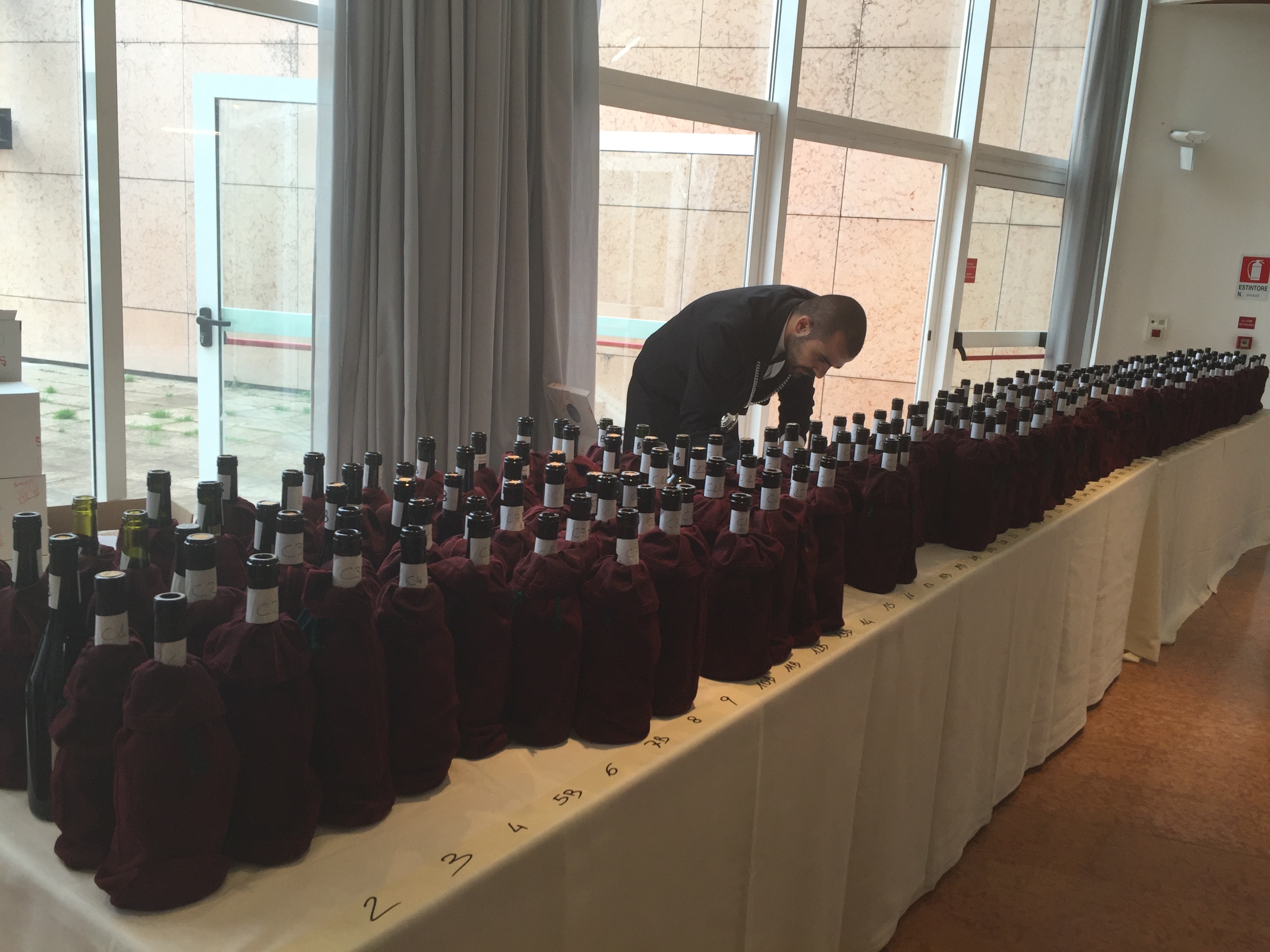 The 13th Edition of Anteprima Amarone was held in Verona on January 30 and 31st when 74 producers revealed their wines from the 2012 harvest to international press, industry insiders and general public.
The 13th Edition of Anteprima Amarone was held in Verona on January 30 and 31st when 74 producers revealed their wines from the 2012 harvest to international press, industry insiders and general public.